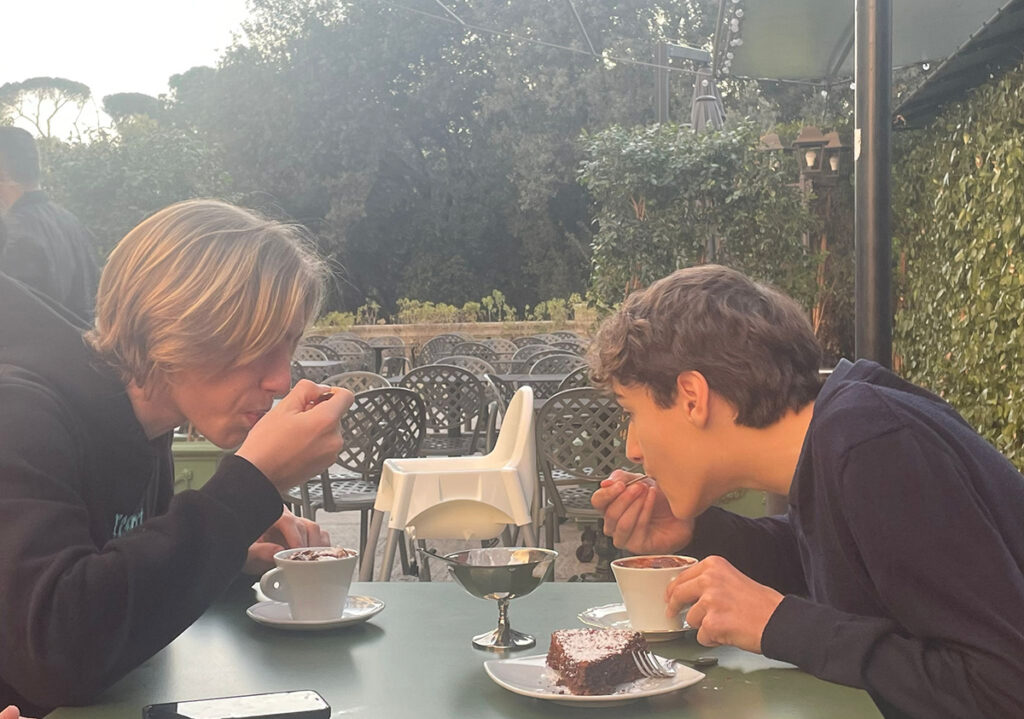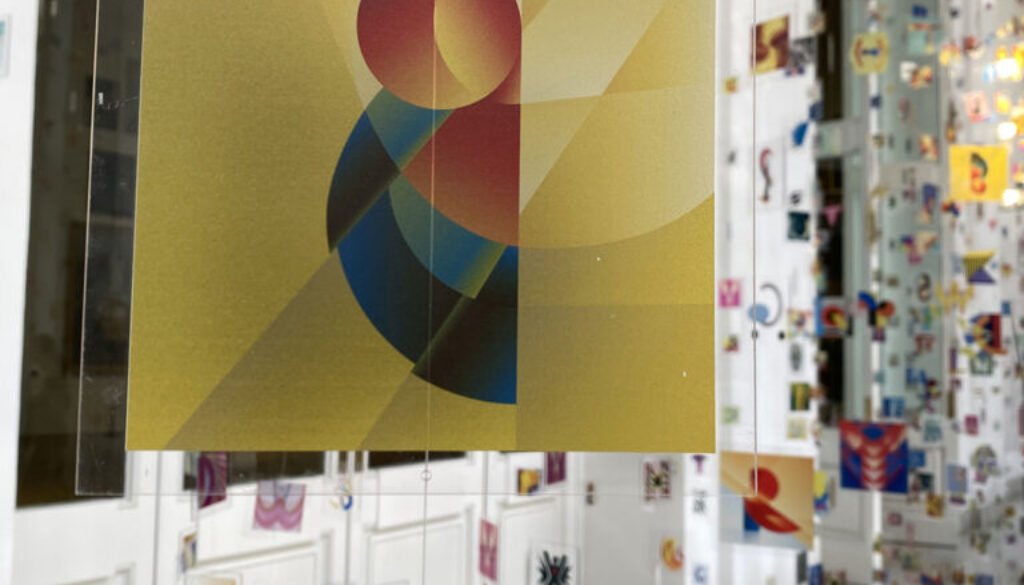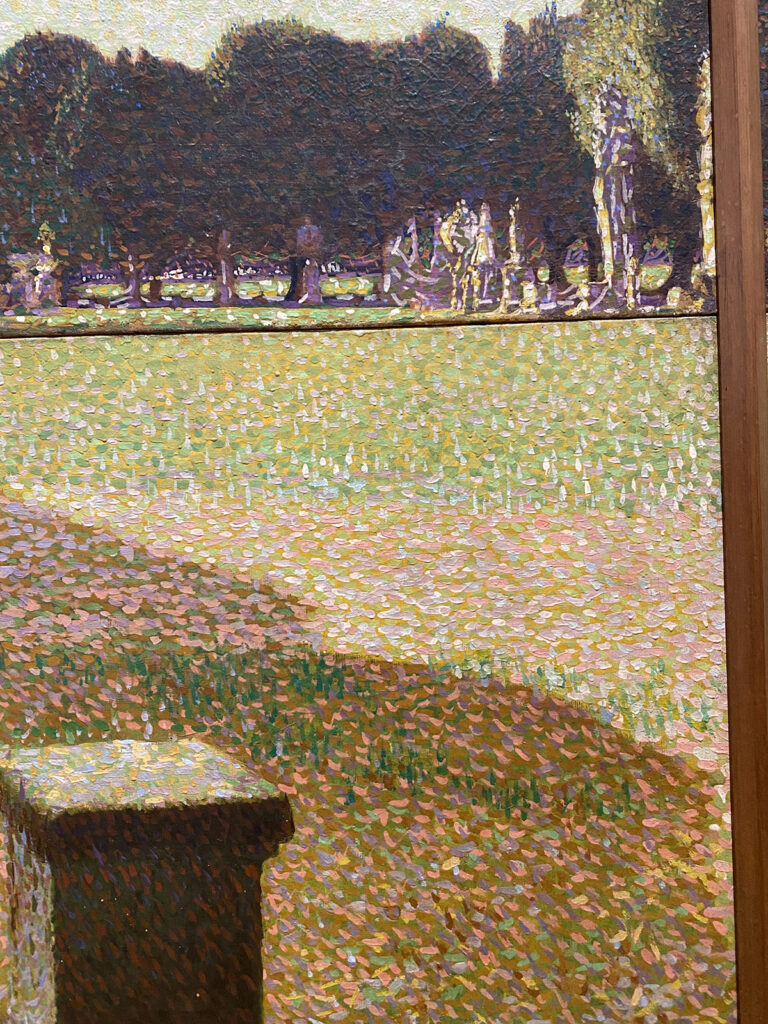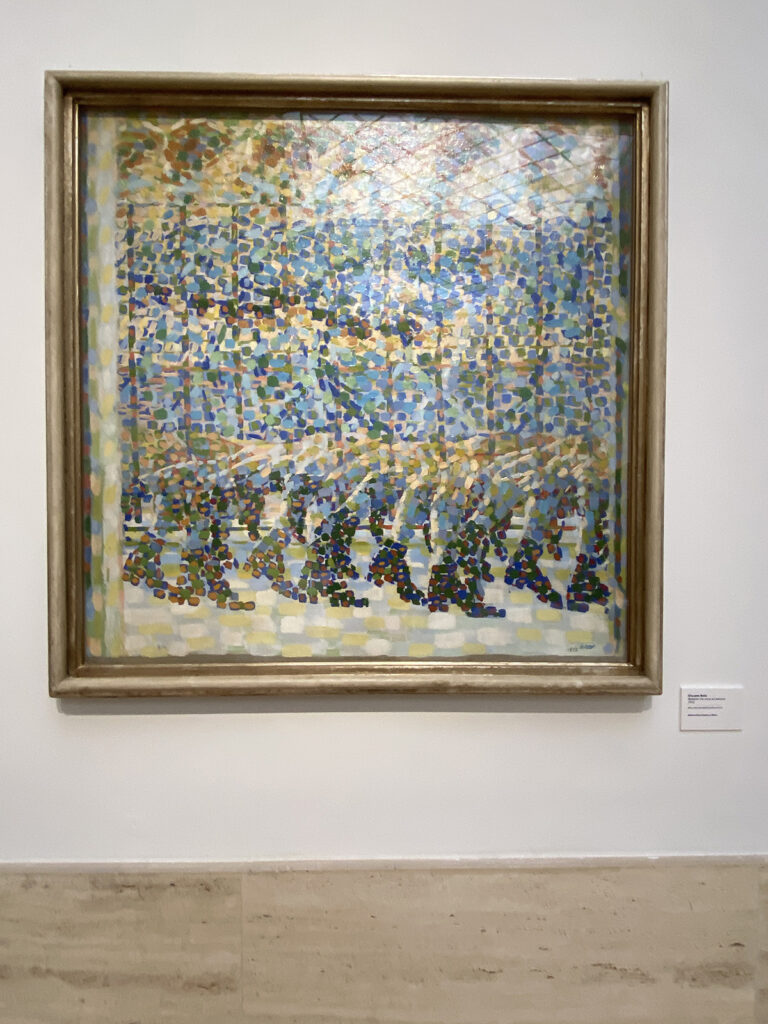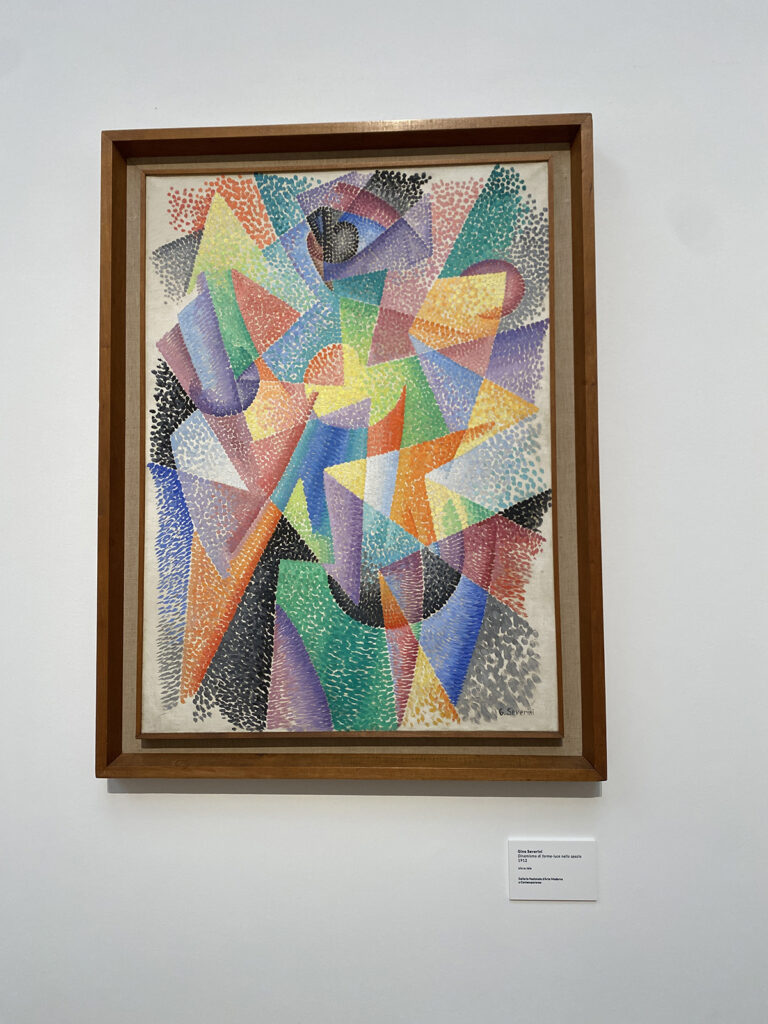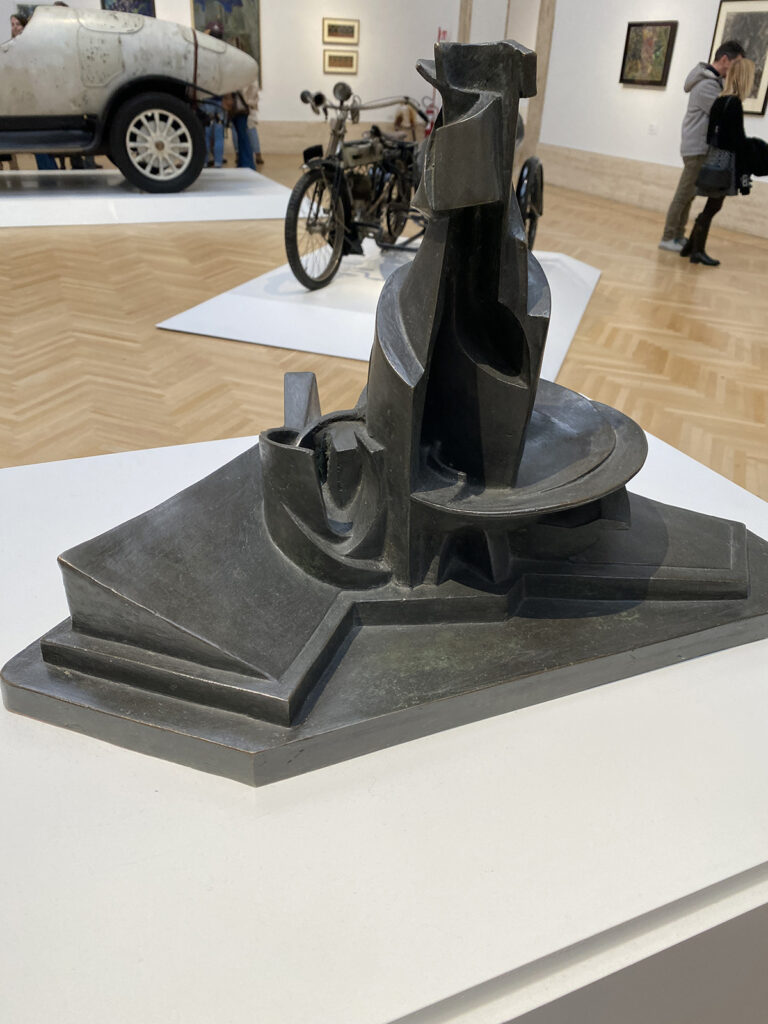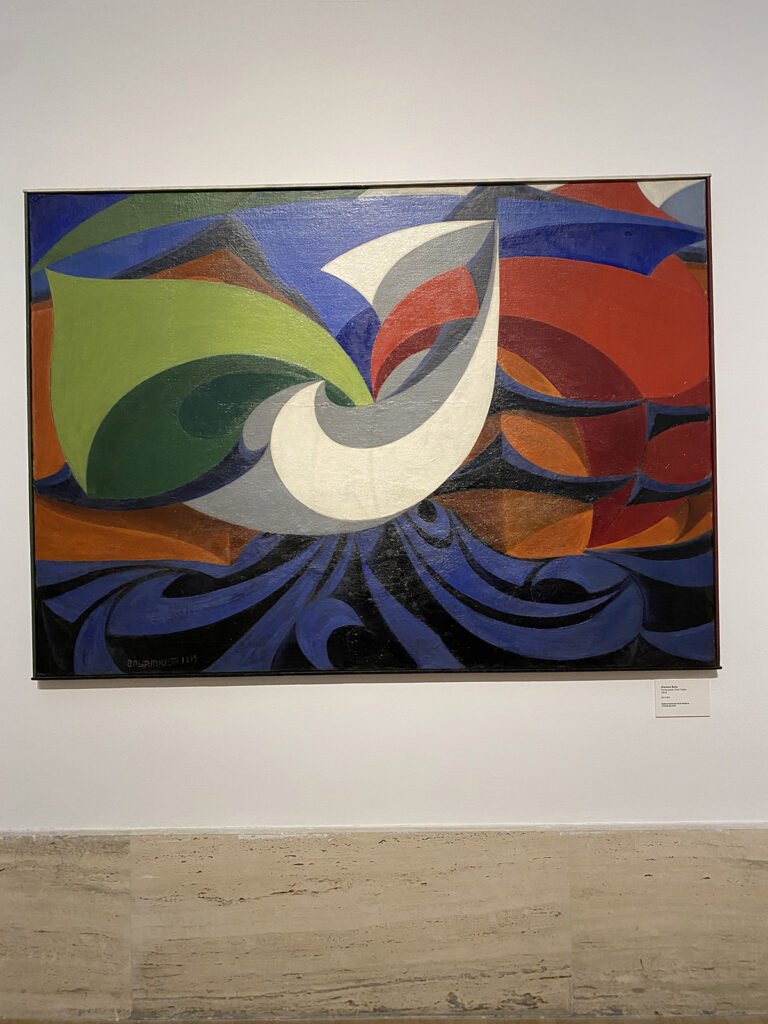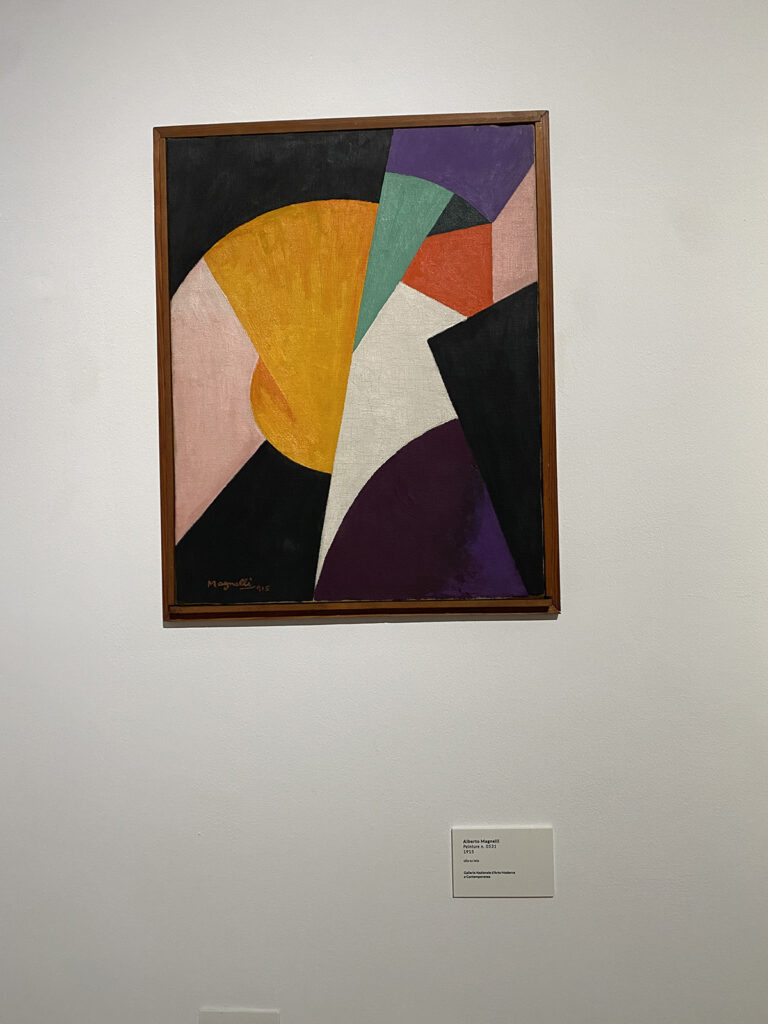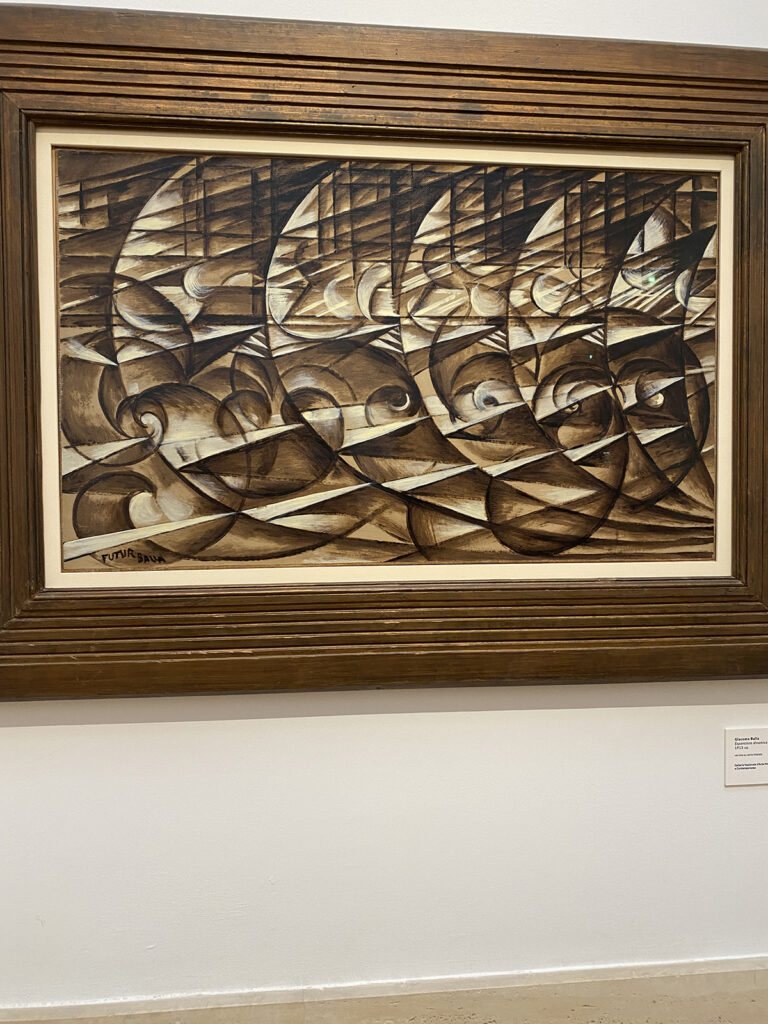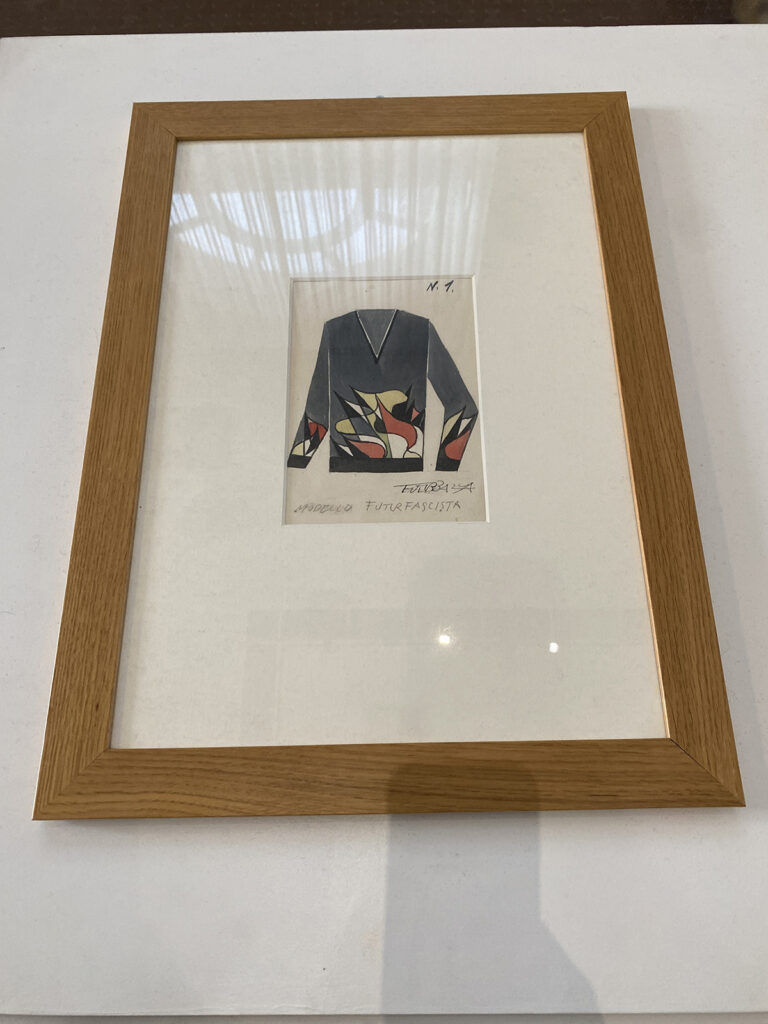Futurismo with Teens
Futurism and I have a long affair. This was the subject of my premiere issue of Italian Journal as its editor, when I got to meet curators and chefs and artists carrying on the light of this special artistic movement of the early 20th century. My family owns a collection of Futurist prints, which has been shown in museums and has its own catalog. When I saw that the Galleria Nazionale di Arte Moderna (GNAM) in Rome was showing Futurismo, I could not wait to take my teenage son to experience it.
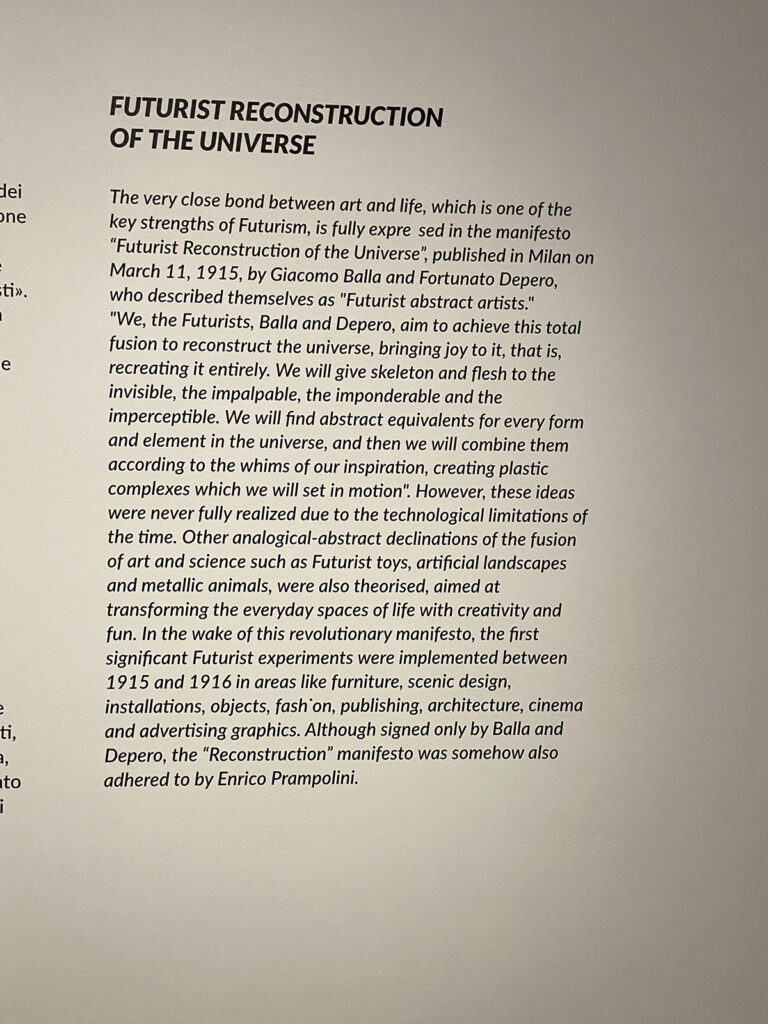
I wasn’t sure what would capture Ludovico and his friends’ attention first — the bold geometry, the depiction of “sound” in the compositions, or the mechanical surrealism of the sculptures. Turns out, he and his friends were quite drawn to the car, plane and machine models throughout the show. This brilliant curatorial touch added a powerful tactile dimension – the very subjects of the artists’ eyes were now in plain view. It was easy to marvel the “novelty” of their time, and why these objects would become part of the Futurists’ observations and depictions.
Marking the 80th anniversary of Filippo Tommaso Marinetti’s passing, the exhibition explores the intersection of art, science, and technology—an eerily relevant theme in our world of AI, automation, and digital realities. As I wandered through nearly 350 works—paintings, sculptures, design pieces, films, and manifestos—I kept thinking about the so-called “Futurist prophecy”: the machinization of the human and the humanization of the machine.
I enjoyed the early works of these artists – noticing their transition into their signature styles, an evolution from their early careers. An installation of graphics printed on transparent panes at the start of the show was also quite beautiful, as was the light sculpture at the conclusion of the show.
The teens of course required nourishment following this immersion – and we had tea and treats at the GNAM’s atmosferic café. Futurists in their own right, I am curious to see the unfolding of their tomorrows.
